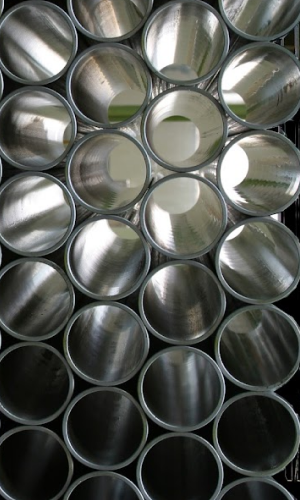Heat exchangers are used in the energy and chemical industries, for heating buildings, domestic hot water, etc. Pipes enable the transfer of energy from one medium to another.
Application examples:
- steam-water heat exchangers (for cooling steam to produce cooling water);
- air-to-water heat exchangers (for heat transfer from air to water to heat or cool buildings);
- water-water heat exchangers (for heat transfer between two streams of water);
- air-to-air heat exchangers (for heat transfer between two air streams).
